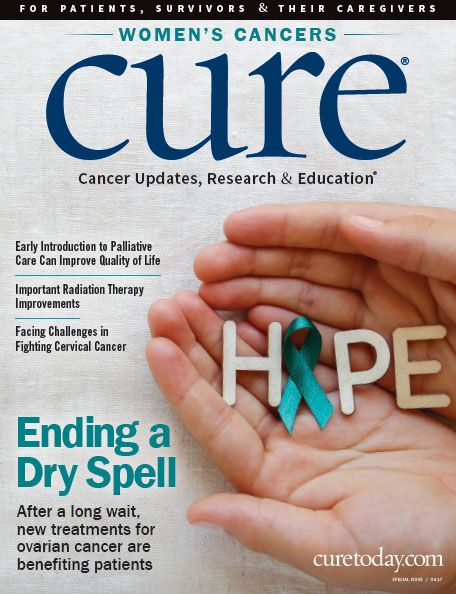Publication
Article
CURE
NCCN Introduces Updated Vulvar Cancer Guideline
Author(s):
Treatment changes for the rare illness include less invasive surgery.
A RECENT GUIDELINE for the management of vulvar cancer, issued by the National Comprehensive Cancer Network (NCCN), outlines the use of resection, radiation therapy and chemotherapy based on disease site and stage, even though only two randomized treatment trials have been completed.
In a cancer as rare as this one, “We are fortunate to be informed by a handful of prospective observational studies,” said Wui-Jin Koh, M.D., who presented the new guideline at the 2016 NCCN Annual Conference.
One underlying principle of the guideline is that early-stage disease can often be cured by resection alone. In addition, an evolution from an extensive approach to a more limited, tailored surgery has taken place.
In the guideline, treatment planning issues are considered separately for the primary site and the groin. This construct is driven by a core of observations. In most cases, metastasis in the groin after initial primary treatment occurs early, at a median of six to eight months, “and they’re rarely curable,” said Koh, a professor of radiation oncology at the University of Washington.
“On the other hand, local vulvar failures occurring in a primary site (in the labia) may occur later on in treatment and can often be cured by additional surgery.” While it is possible for patients to develop a second vulvar cancer — not dissimilar to patients with head and neck cancer, who have an elevated risk of lung cancer — “there is a thought that these are not actually true occurrences as opposed to re-occurrences,” he said.
Primary Treatment
Observation (or radiotherapy based on other risk factors) is recommended for patients with margins that are clear of invasive disease after excision (surgery). If the patient has positive margins for invasive disease, the guideline recommendation is for re-excision with adjuvant (post-surgical) radiation, which should be used judiciously. “Only if patients have positive margins or unresectable primary disease do we routinely recommend radiation in the guidelines,” Koh said.
Lymph Node Evaluation
Sentinel lymph node (SLN) evaluation is the standard method for assessing whether metastasis has occurred, and informs prognosis. In patients with a tumor of 4 cm or less restricted to one area, and no SLN involvement, the rate of groin relapse is less than 3 percent.
If the lymph node evaluation is negative, no adjuvant therapy to the node is recommended. With two or more positive lymph nodes, the recommended adjuvant therapy is radiation, typically with concurrent chemotherapy.
If patients undergo SLN biopsy, the guideline diverges on adjuvant therapy based on size of SLN metastasis. “If their SLN is less than 2 mm in size for positive, then we believe that adjuvant radiation is appropriate treatment,” Koh noted. “But based on the evolving GROINSS V study, if the SLNs are greater than 2 mm … they should undergo a completion inguinofemoral node dissection, followed by radiotherapy with or without chemotherapy.”
Early-Stage Disease
For early-stage tumors, adjuvant radiotherapy is an effective treatment modality that significantly decreases recurrence, especially in surgically resected groins, and leads to improvement in relapse-free survival and overall survival. The greatest independent predictor of groin relapse is groin node involvement at initial presentation.
“We try as much as possible to avoid radiation to the vulva itself, because that is not an area that tolerates radiation well, and it may actually affect the natural history of disease and make pickup of late recurrences or re-occurrences more difficult,” said Koh.
Locally Advanced Disease
The term “locally advanced disease” applies to patients not eligible for surgery. In these patients, radiotherapy, and often concurrent platinum-based chemotherapy, can shrink tumors and allow surgeries of reduced scope that preserve function, or can even be curative.
In addition to being useful for patients whose disease is too advanced for surgery, chemotherapy plus radiation may help address systemic risk in patients with multiple positive lymph nodes. There is an option in these patients for inguinofemoral lymph node dissection, because it is still unclear whether radiation by itself can sterilize disease in the surgically unresected groin.
Patients with positive groin nodes have a poorer outcome. In those who receive radiation therapy for positive nodes, the rate of locoregional disease resistance or progression is reduced substantially, but distant metastasis “becomes the predominant pattern of (recurrence) and cause of death in patients with groin node-positive disease, hence suggesting a possible role for systemic chemotherapy,” Koh said. Use of intensity-modulated radiation therapy is possible, but the volume should be “generous.”






